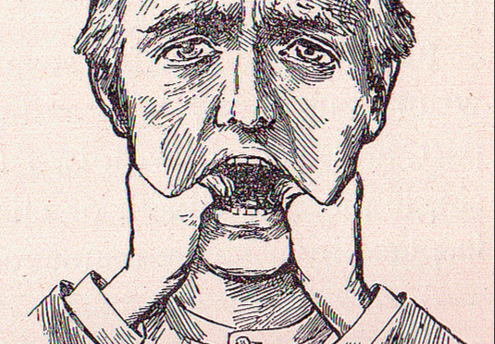There are three subtle tensions that can be hiding in your body and causing shallow breathing.
Learn how to let them go with these three effective tips:
1. The Slightly Tight Ass.
I don’t mean to be rude, it’s just that your butt muscles were not intended to be tense 24/7, and believe it or not, a good number of us are going through life with a tense butt and we don’t even know it! Any tension in the gluteus shortens our breathing. It’s one of the ways our body gets stuck in “fight or flight” mode.
Don’t believe me? Go ahead and try it. Grip your buttocks muscles and then try to take a deep breath. Our diaphragm muscle is not free to descend into the body as long as our butt cheeks are tight. If your butt is even slightly tense, you are unknowingly preventing your body from breathing well.
Tip #1: Close your eyes and actively try to completely release your butt muscles. Imagine that the deepest layers of muscle are relaxing; the ones right near your butt bones. It may help to visualize these muscles as a fisted hand that is slowly unfurling each finger until it becomes an open palm. Visualizations are a great way of connecting the mind to the body.
If you can discover and let go of any tension in your seat, your inhalations will become deeper and fuller.
2. The Clamped Jaw.
Jaw tension is a syndrome that plagues many of us.
Unfortunately, tension in the jaw is always accompanied by tension in the throat and the back of the neck. It’s a fact that even our smiles can be a form of jaw tension. According to the book The Naked Ape, by Desmond Morris, the baring of teeth in simians is a fear response. Even when we are nervously smiling and not really feeling happy, we create jaw tension.
When muscles connected to joints get tense, we can find ourselves, once again, inadvertently stuck in our “fight or flight” response. One of the main reasons jaw tension creates such a problem for our breathing is that any time the upper body becomes locked, so too does the lower body. Our cranial and sacral nerves signal our parasympathetic system; the system that tries to help our bodies get through the “fight or flight” response with as little damage as possible. If you grit your teeth you will feel a corresponding sensation of tension in your lower body.
The good news here is that if we can begin to release our jaw tension then subsequently the rest of our body will relax. We can reverse the negative domino effect, bring back peace and restore deeper, fuller breathing.
Tip #2: I have found that the most effective way to soften the jaw hinge is to imagine that the muscles from the temples to the jawbone have gone completely limp. Ideally you want to create a feeling of complete softness that pervades the entire head, in particular, the back of the neck, the jaw and the throat. If you’ve ever received Novocain at the dentist, then that sensation of complete and utter numbness will come in handy.
The idea here is to allow your jaw hinge to literally be hanging from your skull and then observe your breathing body. Observe any differences in your breath’s ability to affect movement in your lower body. Gradually bring your jaw back to a more normal position but without the tension.
3. The Heavy Heart.
Your heart resides under your breastbone and this area of the body is very susceptible to emotional wounding. When something takes our breath away, it has either offended our soul or reminded it of its origins. The holding of the breath from emotional wounding can cause a permanent tension in our chest. Even with all the attention being given to deep breathing these days, I find that many people are trying, but not succeeding, because of hidden tension in the chest cavity.
Our chest contains our most precious internal organ. When we feel emotionally wounded, our breathing becomes shallow. If we were never afforded the opportunity to release that hurt, then it’s likely that our breathing is still being affected by that moment in time.
Tip #3: Place your hand over your heart and let out a long sigh. Sighs are exhalations that soothe, and are wonderful for restoring movement to our chest cavity. It’s not just the belly that should be moving when we breathe. Even our most gentle breathing, as when we are resting or wrapped up in a good book, should involve subtle movements throughout the body. Good breathing is a holistic experience.
Finding our hidden tensions and releasing them facilitates health by allowing all of your muscles, joints and organs to reap the benefits of breathing well.
When a body breathes well, the natural movements that occur, promote oxygen-rich blood flow to each and every cell and in turn keep our muscles and joints strong and supple.
With a little attention and practice, our breathing is really the ultimate gift that keeps on giving. The difference between breathing and breathing well is the difference between being alive and truly living life.
Also, stop doing this when you’re stressed:
Relephant Read:
The Art of Conscious Relaxation
Love elephant and want to go steady?
Sign up for our (curated) daily and weekly newsletters!
Editor: Emily Bartran
Photo: Sue Clark/Flickr



Read 13 comments and reply